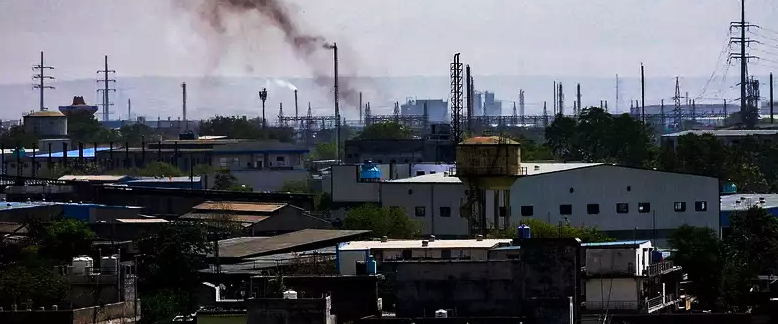Business
Bhiwadi: An industrial city You Should Know About

Bhiwadi is part of Delhi NCR, situated in Alwar district. Bhiwadi is a rapidly developing area and is known for its industrial growth and real estate development. It is home to numerous manufacturing plants, factories, and warehouses of various industries such as textiles, pharmaceuticals, electronics, engineering, and automobile. The town has also seen significant residential development in recent years with the construction of several apartment complexes and gated communities. Bhiwadi is well-connected to major cities in the region by road and rail, and the nearest airport is in Delhi, which is about 70 km away. Delhi Mumbai Expressway is about 40 km away.
For someone who plans to start a career in Bhiwadi or wants to start/shift the industry in Bhiwadi, this article gives brief knowledge about this city.
Industries In Bhiwadi
According to Rajasthan Industries and Trade Directory, more than 150 industries are registered in different segments. Some of the industries in Bhiwadi are:
Textile industry:
- Ginni Filaments Ltd.
- Shree Rajasthan Syntex Ltd.
- LNJ Bhilwara Group
- Suryalakshmi Cotton Mills Ltd.
Pharmaceuticals industry:
- Abbott India Ltd.
- Pfizer Ltd.
- Neelkanth Pharmaceuticals
- Hiran Orgochem Ltd.
Engineering industry:
- Bosch Ltd.
- Daikin Airconditioning India Pvt. Ltd.
- Honda Siel Cars India Ltd.
- Saint Gobain India Pvt. Ltd.
Automobile industry:
- Hero MotoCorp Ltd.
- Honda Motorcycle and Scooter India Pvt. Ltd.
- Honda Cars.
- Rico Auto Industries Ltd.
- Caparo Maruti Ltd.
Electronics industry:
- Havells India Ltd.
- Mitsui Prime Advanced Composites India Pvt. Ltd.
- Omron Automation Pvt. Ltd.
Warehouses:
- Prologis Bhiwadi Industrial Park
- VSR Infratech Warehouses
- Anant Raj Warehousing Parks Pvt. Ltd.
- Shree Krishna Warehousing Co.
Bhiwadi is a fast-developing industrial town in Rajasthan. Before going further to start a new journey have to look at the Pros and Cons of Bhiwadi. Here are almost all kinds of segment industries working so it will be easy for B2B work here due to the availability of raw materials, Manpower, transportation, etc, but it will responsible for high competition also.
Pros:
- Strategic Location: Bhiwadi’s strategic location offers easy access to major cities in the region, making it an ideal location for businesses to set up their operations.
- Proximity to Major Markets: Bhiwadi is located in the National Capital Region, which is one of the largest consumer markets in India. This makes it easier for businesses to access a large consumer base.
- Industrial Infrastructure: Bhiwadi has a well-developed industrial infrastructure, including industrial parks, SEZs, and EPIPs, providing businesses with modern amenities and facilities.
- Skilled Workforce: Bhiwadi has a large and skilled workforce, with several technical and management institutes in the surrounding areas.
- Government Incentives: The government of Rajasthan and the central government offer several incentives and benefits to industries setting up operations in Bhiwadi, including tax holidays, subsidies, and financial assistance for infrastructure development.
Cons:
- Environmental Concerns: Bhiwadi has seen rapid industrialization in recent years, which has led to environmental concerns such as pollution, water scarcity, and waste disposal.
- Infrastructure Constraints: Although Bhiwadi has a well-developed industrial infrastructure, the town still faces challenges in areas such as transportation and sewage treatment.
- Competition: Bhiwadi is home to several established businesses and faces competition from other industrial towns and cities in the region.
- Real Estate Prices: Bhiwadi has seen significant real estate development in recent years, which has led to high property prices, making it more expensive for new businesses to set up operations in the town.
- Regulatory Challenges: Like any other location in India, Bhiwadi also faces regulatory challenges such as complex bureaucracy, corruption, and legal complexities that businesses may need to navigate.
It is important to weigh these factors carefully and conduct due diligence before making any investment decisions.
At last, if you are planning to start an industry or join an industry at Bhiwadi you have to check hospitals for emergency cases and schools for better education of children and other amenities for living that are:
Shopping malls
- Capital Mall, Bhiwadi
- Genesis Mall, Bhiwadi
- BB Mall, Bhiwadi
- BMG Mall, Rewari (located approximately 15 km from Bhiwadi)
- One Mall, Gurgaon (located approximately 35 km from Bhiwadi)
Hospitals:
- Fortis Hospital, Bhiwadi
- K K Hospital, Bhiwadi
- Apex Hospital, Bhiwadi
- Shree Ram Hospital, Bhiwadi
- Lifecare Hospital, Bhiwadi
Schools:
- St. Xavier’s School, Bhiwadi
- Modern Public School, Bhiwadi
- Cambridge International School, Bhiwadi
- Aditya Birla Public School, Bhiwadi
- Ryan International School, Bhiwadi







